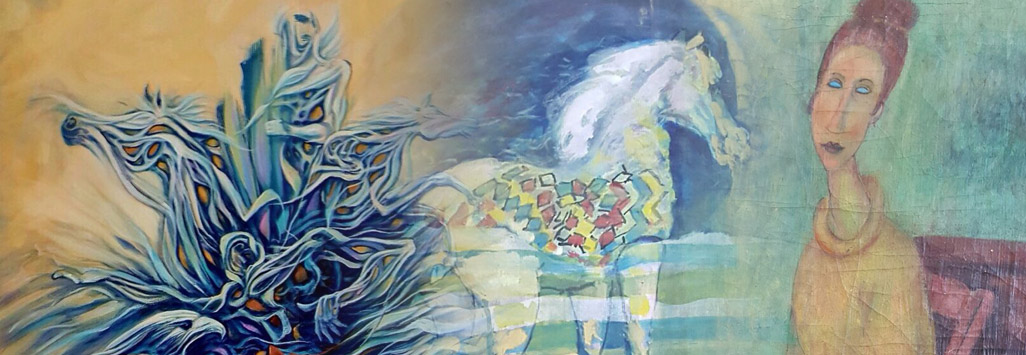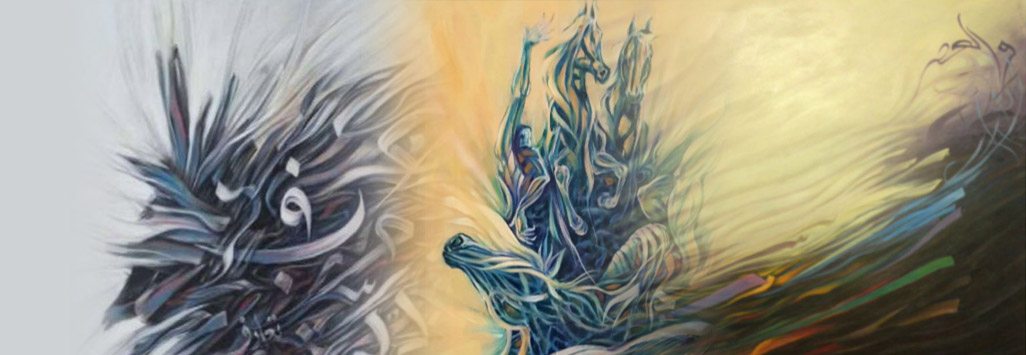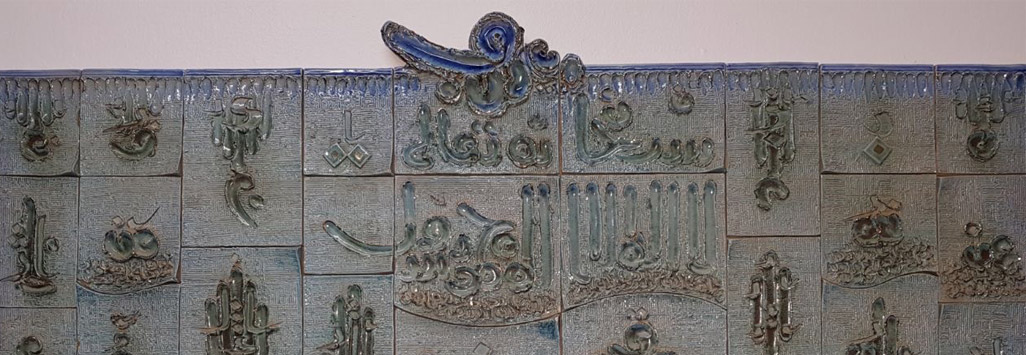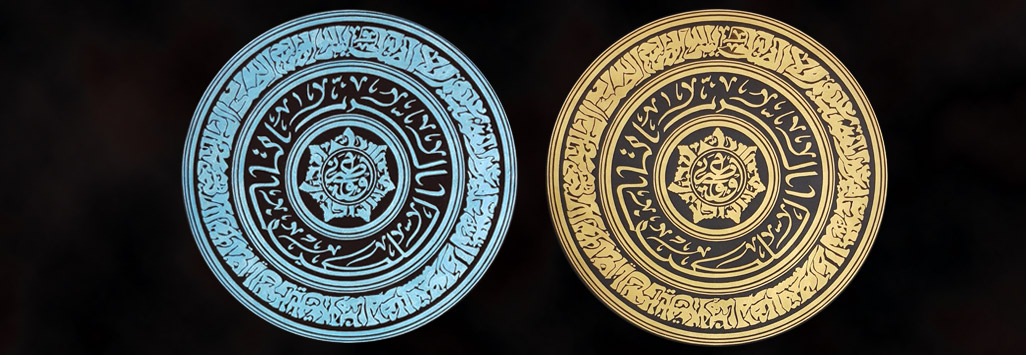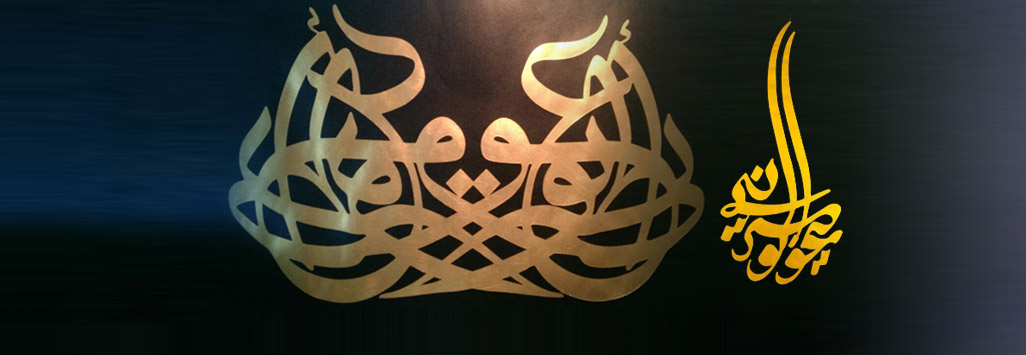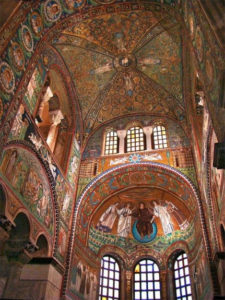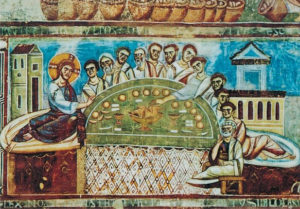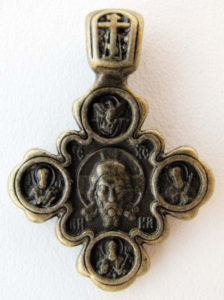Byzantine art between old Christian era and new
Byzantine Art
Characteristics of Byzantine Art
Byzantine decorative units
Architecture, sculpture and Byzantine painting
Byzantine architecture
Byzantine Sculpture
The most important materials and means of implementation
Textiles
Metal and drafting
Skin
The influence of Byzantine art on Islamic art
References
Christianity was subjected to great persecution from the Roman Empire. We recall the order of Delectionians to offer the victims to the Roman gods as an expression of their loyalty to the authority. When the Christians refused to imprison and confiscate their property, the orders were strictly enforced until his age was called “the greatest persecution.”
He came from Constantine, who in 313 ensured the absolute freedom of worship of all citizens. This meant stopping the persecution of Christians. Constantine then ordered the transfer of his seat of government to Byzantium on the Bosphorus. He derived his name from Constantinople and became a patron of the new religion. New art is the Byzantine civilization.
This was the harbinger of the change of Roman art from its foundation, which was called the Eastern Roman Empire. The culture that prevailed in the new capital was a mixture of Greek, Hellenistic and Roman.
In the Byzantine Empire, Christianity, Greek culture and Roman tradition flourished, linking the ancient European civilization with the modern European civilization. The Byzantines preserved ancient Greek literature and philosophy as well as the Roman governmental and legislative traditions.
This new capital became a cultural and artistic center of Byzantine art in particular until the city fell into the hands of the Turks when Conquered by Muhammad al-Fateh in 1453.
Byzantine Art
Byzantine art is considered to be the mirror of the composite entity, which consisted of the Byzantine civilization, where the characteristics of the Greek and Roman arts were combined with the arts of the Levant, Egypt and Persia, which are mixed in varying proportions but combined with a complete gradation that creates an integral part of the art.
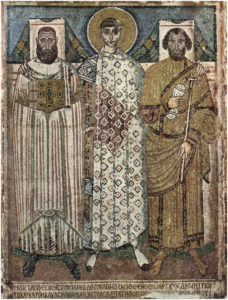 At the beginning of the Byzantine era, the classical arts took on weakening and became unimportant. Hence, some critics of Byzantine art described it as stemming from the weakness of the classical arts and condemned the Byzantine art for its deterioration when it lost the idealism and imitation that characterized Romanian and African art.
At the beginning of the Byzantine era, the classical arts took on weakening and became unimportant. Hence, some critics of Byzantine art described it as stemming from the weakness of the classical arts and condemned the Byzantine art for its deterioration when it lost the idealism and imitation that characterized Romanian and African art.
But to judge Byzantine art one must take into account other criteria and realize that classicalism is not the only form of artistic form.
After the division of the Roman kingdoms in 395 AD to one in the west and the other in the east, the Byzantine arts became a new school aimed at mixing the manifestations of the ancient Roman civilization with the data of the Christian religion. It can be said that when Roman art lost its ability to continue it allowed the intervention of the arts of the East with its special decorative effects, Which serves the religion’s needs for forms and symbols just exist in abundance in the arts of the East.
As a result of the solutions of the Christian religion with different ideas, opinions and beliefs about the Greco-Roman civilization, it developed a new style and methods that serve the new religious needs and found what is required in the oriental arts. For example , the normal Greek statue, harmonious and beautiful naked muscles or covered in thin clothes, For the tranquility, prestige, reverence, reverence and reverence required in the statue of this period .
Characteristics of Byzantine Art
 Byzantine art in essence was a religious art or fruit of the religious era in which Christian victory was based on the psychological idea of the events of fear, terror, and prove the faith in the same scenes either through symbolism or abstraction, which is hidden behind meanings and feelings …
Byzantine art in essence was a religious art or fruit of the religious era in which Christian victory was based on the psychological idea of the events of fear, terror, and prove the faith in the same scenes either through symbolism or abstraction, which is hidden behind meanings and feelings …
- Movement stability:After the Greek and Roman drawings were recorded, the events in outgoing manner, sometimes overwhelming, and even with the noisy movement. The character of Byzantine art brought calm and the stability of the movement completely.
- People’s Drawings:
 It has taken a distinctive character with a calm and steady movement in the drawings of people who are standing in one row and they are completely forward. Their hands have taken the position of steadfastness, to represent the situation of prayer and worship by lowering the arm’s slightly and lifting the forearm with open hands at the level of the face, or folding the forearms on the chest is evidence of faith, or carrying of the Bible. The folds of clothing appeared lines on close dimensions and distances.
It has taken a distinctive character with a calm and steady movement in the drawings of people who are standing in one row and they are completely forward. Their hands have taken the position of steadfastness, to represent the situation of prayer and worship by lowering the arm’s slightly and lifting the forearm with open hands at the level of the face, or folding the forearms on the chest is evidence of faith, or carrying of the Bible. The folds of clothing appeared lines on close dimensions and distances.
- Christ has been painted in different ways:
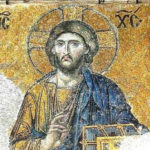 Sometimes it is expressed in symbolic forms of his body, lamb or fish, or the Greek word on the loaf or chrome coils.
Sometimes it is expressed in symbolic forms of his body, lamb or fish, or the Greek word on the loaf or chrome coils.- Christ’s representation was derived from two sources:
Helensity: a young man with strong muscles in the image of one of the Greek heroes’ god not wearing full clothing, just in a short Greek dress.Oriental: A man of thirty years old with a moustache, and a short beard in full clothing, & long hair falling on his shoulders.The father who is capable of everything is depicted by an old man.
- Abstraction and Modification:
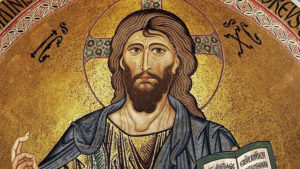 The solution of morphology and symbolic abstraction replaces the representation of nature as seen by the eye, where we see in the new style the faces are small and round or oval leaning towards elongation, the eyes are broad, with the lines of the arch, looking forward in calmness and inertia, but loaded with the meanings of the quiet faith, the nose is thin and goes to the length and the mouth is small with sealed lips, The head, mustache and chin are styled either in the form of a small chisel and arranged in a monotonous decorative pattern or in the form of equal or decorative lines.
The solution of morphology and symbolic abstraction replaces the representation of nature as seen by the eye, where we see in the new style the faces are small and round or oval leaning towards elongation, the eyes are broad, with the lines of the arch, looking forward in calmness and inertia, but loaded with the meanings of the quiet faith, the nose is thin and goes to the length and the mouth is small with sealed lips, The head, mustache and chin are styled either in the form of a small chisel and arranged in a monotonous decorative pattern or in the form of equal or decorative lines. - Topics:
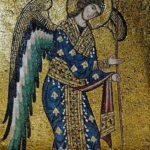 Instead of recording pictures representing the epics, war battles, or even daily life pictures, parties and banquets, there is a need for pictures representing the saints, clerics, events and stories required by the Christian religion. We find pictures and scenes from the Old and New Testaments, The scene of the crossing of our master Moses the sea- Jounas swallowed by the whale (pictures of his Hellenstein in the early period and then pictures in Byzantine art in full clothes and became his story symbolizes the Baath and painted on the Christian coffins) – scenes of the life of Christ as the last supper baptism Lord’s Supper.
Instead of recording pictures representing the epics, war battles, or even daily life pictures, parties and banquets, there is a need for pictures representing the saints, clerics, events and stories required by the Christian religion. We find pictures and scenes from the Old and New Testaments, The scene of the crossing of our master Moses the sea- Jounas swallowed by the whale (pictures of his Hellenstein in the early period and then pictures in Byzantine art in full clothes and became his story symbolizes the Baath and painted on the Christian coffins) – scenes of the life of Christ as the last supper baptism Lord’s Supper. - Decorative units: It is worth noting that the Byzantine art became a new style that differs from what is prevalent. The style and archetypes of ancient art have disappeared, replaced by a new model and new units and symbols, such as crucifixes and images of angels, have been invented.
Byzantine decorative units can be classified into:
- Plant decorative elements:It was used by the branches, leaves, grape clusters and three or five wicks and vegetal units that were difficult to return to their natural origin. They were used in ribbons and fillings and often overlapped with geometric shapes.
- Laurel:
It was commonly used in wreaths that surrounded the sacred signs or statues, and the wreath that emanates from its basket or flower was one of the best decorative units of the mosaic artists. - Chromium:
Grapes and grape clusters are among the most important decorative units used in Eastern Christian art and are common to Byzantium. However, Christian art has a new meaning that was used as a religious symbol of Christ itself. The grape leaves were also used extensively on sculptures, mosaics and frescoes. - Coz pine:
Used in Assyrian art and in early periods of Byzantine art, but it was not used much.
- Laurel:
- Animal fees:
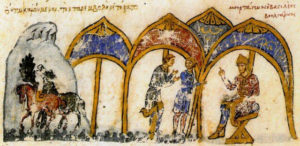 Modification, abstraction and simplification of decoration and use of animal and bird species symbolized the religion of Christ, especially pigeons and peacocks commonly used animals corresponding or trailing animals as found.
Modification, abstraction and simplification of decoration and use of animal and bird species symbolized the religion of Christ, especially pigeons and peacocks commonly used animals corresponding or trailing animals as found. - Engineering units:
 Many rely on simple engineering units and overlapped with engineering units with plant and animal units.The simple geometric units were used in the work of stone and colored marble designs based on boxes, daisies and triangles in these decorations. They were used as a type of floor decoration and under the walls. The influence of the oriental arts was evident in these decorative formations
Many rely on simple engineering units and overlapped with engineering units with plant and animal units.The simple geometric units were used in the work of stone and colored marble designs based on boxes, daisies and triangles in these decorations. They were used as a type of floor decoration and under the walls. The influence of the oriental arts was evident in these decorative formations - Symbolic shapes:
- The cross is the holy emblem and is a symbol of the Christian religion, which is mentioned in its crucifixion and has four models:
-
- Greek cross: four equal arms.
- The Latin Cross: Its lower leg is slightly longer than the other three arms.
- The 10th Cross: In the form of Latin number 10.
- Cross of St. Anton: The form of the Greek letter TAU.
- The hallowed hallow is one of the signs that I have learned about Sassanian art painted not only about the head of the saints and the heroes as well as about the holy animals.
- The crucifixion halo painted with the head of Christ and inside is a cross.
- Human characteristics ( rivers – mountains – cities – qualities such as wisdom judgment … (
 One of the most photographed images of the Jordan River is an elderly elder like the river builders in the classical, pagan art.
One of the most photographed images of the Jordan River is an elderly elder like the river builders in the classical, pagan art.- The sun and the moon represented as half statues, one of them wearing the crown or a crown of light on the head and representing the sun and the other wearing a crescent on his head represents the moon.
- The years and months are illustrated by human bodies complete or halves.
These symbols were used in early Christian periods.
- Color:
 Turn the colors towards the decency and calmness and went to flatness and less use of the color gradation (style of shade and light).The most common colors were brown, red, blue, green, black, and white, and gold was the most common color and silver foils were used to outline black decorations before coloring.
Turn the colors towards the decency and calmness and went to flatness and less use of the color gradation (style of shade and light).The most common colors were brown, red, blue, green, black, and white, and gold was the most common color and silver foils were used to outline black decorations before coloring.
Architecture, sculpture and Byzantine painting:
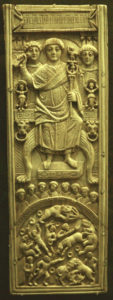 The three arts overlap in Byzantine art as they have the same tradition that many scholars have introduced as a linked unit to this art.
The three arts overlap in Byzantine art as they have the same tradition that many scholars have introduced as a linked unit to this art.
It is worth mentioning that most of the Christian sects refused to set the statues for their connection to the religions that presented the statues as idolaters, and it came to complete prohibition. The concept of vacuum in the classical representation of the three dimensions of reality became a Christian concept of an infinite symbolic world limited to two dimensions. Thus, the byzantine art of imaging and carving met its needs to explain and record pictures of the poles of religion and prophets and religious events.
However, some sects were also prohibited recording the images of the prophets and saints, and the group that opposed the existence of such images worked to destroy them in all the churches and then reached an agreement to approve the presentation of such images in 843 as it is used to explain and clarify religion in an easy way understood by the people and Returning to paganism has become a rejected idea, so most of the pictures and mosaics are found after this date, led by a structure separated from the lobby by a veil accompanied with rooms and side appendices .
Byzantine architecture:
 Instead of building palaces, baths, and Greco-Roman temples along the inside additions or architectural designs, became in need to build a church that serves its purposes architecturally from the inside and outside to the needs and requirements.
Instead of building palaces, baths, and Greco-Roman temples along the inside additions or architectural designs, became in need to build a church that serves its purposes architecturally from the inside and outside to the needs and requirements.
As well as the work of the interior architecture, where inside the church requires a hall and the main lobby of the worshipers, a structure needed for the church, as well as special types of church furniture, utensils, and metal products required for the performance of religious rituals within the church, also clothing for priests and deacons who perform the duties of prayer and ritual.
For all these needs and reasons, Byzantine art needed to create a new artistic model to serve these functions and purposes. Indeed, new styles and styles have emerged in their characteristics, materials and the way they were different from what was prevalent in previous Roman civilizations.
Byzantine architecture is considered the first artistic field in which Byzantine art achieved successful additions. The most important of these were the vaulting of the dome above the square. It was necessary to create a semi-spherical dome above the square floor area where it forms an important part of the church building:
- Use of spherical shoulders ( PENTIVES) Are triangles that rise from the corners of the square and bend inward to meet in a circle.
- sanctuaried corners SQUENCHES), Which is curvy vaults, each of which consists of a vault topped by a vault through the square corners either in the square’s neck image, or in the same level of the main axes.
In Byzantine architecture, this technique was required in many cases so that architectural extensions could be added to the quadrangular floor so that a Crusader-shaped church with a basic hemispherical dome could be constructed, surrounded by smaller vaults, or surrounded by semi-vaults of four designations and formation of a large vault On the shape of a cross.
It is natural to remember both Basilica and the Rawtan. The Basilica an architectural style originally meaning the royal palace, which is a large, rectangular hall with two columns and a semicircular dome that used as court house our commerce room . The Rawtan is a round hall topped by a hemispherical dome like the dome of Penthion temple in Rome. But both Basilica and Rawtan were not in the image needed for the square floor that was required to be the beginning of the church floor design .
– Columns :
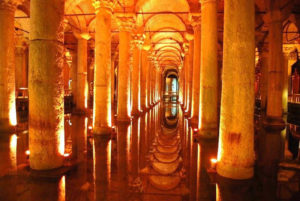 The church’s interior architecture has many pillars to carry or help carry the main vault of the church. Other columns may be erected to help carry the roof next to the main basement covered with the building of the church, and to add the meanings of prestige, dignity and glory generated by the multitude of columns inside the building.
The church’s interior architecture has many pillars to carry or help carry the main vault of the church. Other columns may be erected to help carry the roof next to the main basement covered with the building of the church, and to add the meanings of prestige, dignity and glory generated by the multitude of columns inside the building.
The capitals of these columns are distinguished by some differences from the Greek-Roman architectural styles in the design of the acentes, where they tend to lack the trappings of this paper and towards its limbs towards the remarkable pedaling with the simplification of the curves and their tendency toward decorative modification and abstraction. The Persian and Aramaic effect is clearly observed in the form of the new paper In the middle of the crown, these papers are mediated by a circle with a cross.
Thus a new pattern of crowns consists of four crowns, each of which crowns a decorative shape of the cross surrounded by a modified set of acanthus leaves.
He also devised a new style of column capitals, a set of ribbons arranged in a decorative geometrical style closer to the shape of baskets.
A pattern of column capitals was also known as the “crowned crown”, which is a small paper with branches in a shape closer to the shape of the corinthian crown. However, the smaller ones and the many spaces between them made them closer to the khrom.
It is easy to sense the eastern influence in the direction of these crowns towards simplification of the decorative rather than towards the honesty in the natural representation which was characteristic of the ancient Greco-Roman style.
Byzantine Sculpture:
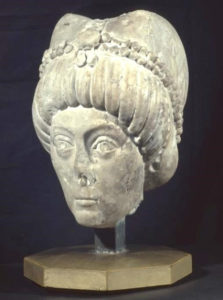 The changes sculpture style Byzantine old classical style and formed his new methods and patterns were probably return to the well – known in ancient Egypt , where the statue became Byzantine in that situation , who watched from the front only tradition, the violent situation completely zero , and returned to the fixed posture quiet dignified sober and moderate face Looking forward, calm and stable arms.
The changes sculpture style Byzantine old classical style and formed his new methods and patterns were probably return to the well – known in ancient Egypt , where the statue became Byzantine in that situation , who watched from the front only tradition, the violent situation completely zero , and returned to the fixed posture quiet dignified sober and moderate face Looking forward, calm and stable arms.
But that was via special traditional artistic styles & techniques, which were represented in the byzantine sculpture as follows
- The Face: Characterized of a great, & solid calmness. The artist tried to show features of piety, deception, & asceticism that can be seen in saints & clergy.
- The Eyes Triangle: Wide & looking forward steadily, with a fixed distinctive, traditional decorative style.
- The Nose: Was straight, thin, & of a decorative pattern.
- The Mouth: Accurate, with small lips, sealed in calmness, strict decency.
- The Hair: Styled either as: delicate, adjacent ripples, or as small locks o hair, delineated closely, or as small in an abstractive decoration pattern.
- The Facial Hair: Usually there was a thin moustache, as for the beard it was either a small tapered one, or small locks monotonously wavy, decoratively adjacent.
- Hands & Arms: The hands size got smaller noticeably, & took special traditional positions to express faith & devotion, with the pinkie and ring fingers contorted with the thumb, while the index and middle fingers were free and straight.The hands and arms took new positions; they were mostly stable on the chest in a situation of requesting and praying humbly to god, or the situation of holding the bible close to the chest expressing faith.
- Feet: The size decreased and wasn’t consistent with the unreasonably long bodies, & they were in simple sandals revealing the toes details in a traditional decorative picture.
- The Fashion: It tended to be loose, with straight close folds, in a distinctive decorative pattern, clearly noticed in such patterns.
A scarf-like piece of cloth with thin adjacent decorative fold is usually seen.
The Byzantine art through these new traditions deviated a lot from the idealism & styles of the Greeko-Roman sculpturing, that was popular before the Christian era, which few of its idealistic characters are: The representation of nature, & leaning towards the new style, which was close to old oriental sculpturing, but with traditions & idealism that was essential to it from the sides of: image, symbol, & meaning.
A new artistic model has appeared after that can be considered moderate between sculpturing & prominent engraving, which prevailed through churches’ entrances as groups of prophets & saints standing in rows close to each other, & became a basic part of the entrance design, when they are standing on a prominent line that may represent the earth line in a decorative way, with arcs topping their heads all the way to the entrance gate. These statues were sculptured in a high degree of prominence & realization, but still fixed closely on the entrance wall.
Also in the gardens surrounding the church, especially the spaces in front of the entrance, statues of prophets, saints, & clerics were made, mainly for the purpose of asking for grace.
Some Christian sects allowed putting models of prophets & clerics statues inside the church, maybe sometimes allowed praying in front of them asking for their help & intercession, while a lot of sects prohibited the presence of such statues inside or outside the church as it was banned in the first ten commandments of Torah, even if it was for intercession & blessing
The most important materials and means of implementation in these three arts:
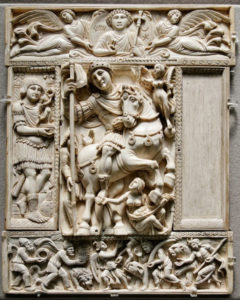 Wood Carving : Wood has become one of the best raw materials required to meet the needs of the church in terms of registration of events and religious events was also the method of drilling is the most appropriate means of artistic and decorative required.Many of the canaries and ribbons were made to be used to decorate the doors and coffins of the churches, to make veils, and to religious ritual boxes. Many of them were made of crowns, shoulders, and sometimes wooden poles.Because of the nature of the wood itself, the Byzantine artist found his way to use it in the depiction of many religious or symbolic scenes, and on various areas, from digging small pieces of icons in their sizes in a manner of drilling, so that they would be replaced by alternative scenes of sculpture.Byzantine archeology was decorated with carved woodwork. Most of which represent ribbons, canaries and frames, engraved with decorative repetitions or paintings representing the poles of the Christian religion or famous religious events. This material was often painted with transparent or colored wax and sometimes gold and silver foil was used to cover the engraved forms.
Wood Carving : Wood has become one of the best raw materials required to meet the needs of the church in terms of registration of events and religious events was also the method of drilling is the most appropriate means of artistic and decorative required.Many of the canaries and ribbons were made to be used to decorate the doors and coffins of the churches, to make veils, and to religious ritual boxes. Many of them were made of crowns, shoulders, and sometimes wooden poles.Because of the nature of the wood itself, the Byzantine artist found his way to use it in the depiction of many religious or symbolic scenes, and on various areas, from digging small pieces of icons in their sizes in a manner of drilling, so that they would be replaced by alternative scenes of sculpture.Byzantine archeology was decorated with carved woodwork. Most of which represent ribbons, canaries and frames, engraved with decorative repetitions or paintings representing the poles of the Christian religion or famous religious events. This material was often painted with transparent or colored wax and sometimes gold and silver foil was used to cover the engraved forms. Stone Engraving: It was used in the architecture of the Byzantine church must of which was decorated in the style of prominent engraving or deep caved engraving and it used the decorative and, repetitions, and sometimes images of the prophets and clerics, and sometimes overlapped these images with decorative units, such as the image of one of the prophets in a mosque in the middle and surrounded by a framework of branches of plants or the background are all engaged in branchings Fine vegetarian.
Stone Engraving: It was used in the architecture of the Byzantine church must of which was decorated in the style of prominent engraving or deep caved engraving and it used the decorative and, repetitions, and sometimes images of the prophets and clerics, and sometimes overlapped these images with decorative units, such as the image of one of the prophets in a mosque in the middle and surrounded by a framework of branches of plants or the background are all engaged in branchings Fine vegetarian. Engraving on bone and ivory :It was used in small works of prominent or deep caved engraving, or the so called works of the violators “Agor” which is engraved accurate decorations looking like violations. If the Ivory or bone piece was thin the holes become fully empty.
Engraving on bone and ivory :It was used in small works of prominent or deep caved engraving, or the so called works of the violators “Agor” which is engraved accurate decorations looking like violations. If the Ivory or bone piece was thin the holes become fully empty.- Mosaic works and mosaics:
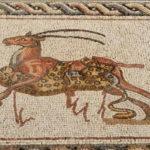 The pieces of marble and colored stones were often used to draw the poles of religion and its important events in the images of its execution in compacting small pieces of different colors. This style of art was known in Greco-Roman art, but only the artistic style or pattern was changed.It has been used extensively to paint many paintings and murals because survive longer without being affected by the essence of smoke inside the church or the outside environment.
The pieces of marble and colored stones were often used to draw the poles of religion and its important events in the images of its execution in compacting small pieces of different colors. This style of art was known in Greco-Roman art, but only the artistic style or pattern was changed.It has been used extensively to paint many paintings and murals because survive longer without being affected by the essence of smoke inside the church or the outside environment. - Carving and coloring:
 Coloring method was used with different artistic methods such as:
Coloring method was used with different artistic methods such as:
- alfresco :
It is the work of a thin layer of hydrated lime paste and fine sand above the wanted surface and then coloring in color mixed with water only, and after the surface dry the transformation of the lime with the carbon dioxide in the atmosphere and turns to calcium carbonate , so the drawings are fixed not affected by water. - Tempera :
The surface is coated with a soft layer of plaster and painted with the colors water mixed with a little egg white to stabilize the colors. - Wax :
It is often used over wood after covering it with a thin layer of plaster and then colored over the surface with molten wax mixed with color. - Painting on gilded floors :
It is used on top of the soft plastered wood, and then golden glazed of the floor, by gluing gold foil, then coloring it with melted wax mixed with colors.
- alfresco :
Textiles :
Byzantine textiles were famous in the ancient arts. The world’s museums were filled with pieces of these textiles and they were known as silk textiles and linen wool.
For example, they imported excellent silk yarns from Persia and India, and woolen yarns from Turkestan and China. They were imported from Turkey and China.
The Byzantines adorned their artefacts with various means and methods that gave their works such distinguished artistic reputation. The most famous of these methods are the following:
- The style of woven fabrics:It is woven of fine cloths as ribbons containing decorative units and successive drawings, which are mostly circular, oval or square. The images of the prophets or angels are surrounded by geometric frames or like decorated ropes. The rest of the floor is filled with plantations.After being filled with the openings and the edges of the recesses like decorative angles, especially around the opening of the neck and chest and the sleeves of the sleeves are often of the same color woven dress, while the decorative units in different colors are often of red or dark blue or brown and slightly used black
- Embroidery style:In Byzantine art, it is known as “needlework”. It is an alternative to woven fabrics. It was executed with different colored threads, with gold or silver wire, and it was also applied to the same places around the neck and chest opening, the sleeves of the sleeves and the undershirt. Fill new areas at noon and chest.This method was used in women’s clothing, and the clothing of the clergy, especially when they were dressed during ritual or prayer services. As they were in men’s robes, especially the rich classes, or those prepared for special occasions.It is worth remembering that glass beads were often used as beads, colored stones, and sometimes precious stones.
- Method Almkhramat:Types of ribbons woven by special needles and using threads of embroidered silk, wool or linen were known to represent angels, and may be made from figs or plant formations. It was similar in decorative styles woven tapes, but they were woven in one color either to be the same color black or to be mixed with him, and was woven in this way some of the needles and bedspreads.Another method is the work of decorative holes, often small circles of different diameters or squares and aids create decorative configurations are often more convinced of the color of the garment itself, and sometimes the color is different and contrasting with the color of the dress and if the holes are thin and accurate and many named Wage works, but if some of the so-called (works of Jubair).
Metal and drafting:
The Byzantine church was known for its special styles of metal works such as crosses, cups, jugs and flints, in addition to the metal works that were known during the Greco-Roman era.
The same old tools and methods of operation were used, such as: pressing and excavating, gold and silver wires, roads, casting, inlaying, inlaying, punching, enamel.
But the pattern and style was influenced by the influences of Christian religion and its decorative units, and showed the impact of the arts of the East, especially the Persian and Egyptian.
The drafting also defined new models that were made to be perceived by the general public as chains with icons attached to the images of Jesus, the Virgin, the great prophets of religion, and the angels. They were enjoying gold or silver. The images were stereoscopic or engraved. He also used vaccination and studding with bellows and precious stones , and punishing wages.
Skin:
The skin was used in many ways flakes of small animal skins were used, and was bleached with alum wood in writing on its surfaces and known as manuscripts. The thin skin was also used to cover these manuscripts, especially the Bible, which was called “the art of binding manuscripts”.
These volumes have been decorated in a variety of ways, including pressing, excavating, glassing, or precious stones.
The influence of Byzantine art on Islamic art:
It is known that the methods of Hellenistic art gradually developed after the rule of the Christian religion, and that this development led to the establishment of Byzantine art since the fifth century AD.
This art is was considered one of the oriental art rinds. It represents a fusion of classical and oriental styles. This was done entirely in the 4th or 5th century AD. This fusion was the essence of the elements of Rome from the Hellenic world, and from the East together.
Byzantine techniques developed in the Eastern Roman state, a great development between the fifth and eighth centuries AD, but this development was slow in Egypt, the Arab conquest was set in the first half of the seventh century, Byzantine art could not reach in Egypt to maturity.
It is important to note that in the Byzantine style, artists have often relied on the exaggeration of architectural and decorative formations in terms of sizes, decoration, colors, use of expensive materials and excessive gilding, rather than their reliance on optimal artistic values and proportions. In Hellenistic and Hellenistic Roman times, by placing them first.
The Byzantine art was based on the incarnation of sacred history and the use of symbolism. The symbolic depictions of the dove, the fish, the ship, the anchor, the harp, the fisherman, the pastor, the peacock, the cross, the grape leaves and its clusters were used to serve the Christian faith, as well as decorations representing the clergy, saints and angels. Modification, abstraction and decorative simplification.
In the field of geometric decoration, many geometrical forms such as the inner cross, the circle with the cross and the stellar shapes, as well as the regular circles and polygons, which in some configurations are connected to each other by contract or interlacings). In the Byzantine era, artists also tended to subject vegetal decorations to geometrical distribution.
 The branches, leaves, clusters of grapes of three or five vertebrates, acanthus, antimony, rosetta, and ivy, and plant units and leaflets that cannot be returned to nature were also used. The patterns of repetitions and symmetry In tapes and fillings and often overlapped with geometric formations.
The branches, leaves, clusters of grapes of three or five vertebrates, acanthus, antimony, rosetta, and ivy, and plant units and leaflets that cannot be returned to nature were also used. The patterns of repetitions and symmetry In tapes and fillings and often overlapped with geometric formations.
The most important colors used in this art are brown, red, brown, blue, and green, especially turquoise, bright orange, orange, black, and black. And white, also used gold and silver as colors and engraved drawings dig deep into the stone.
As for the Islamic art influenced by Byzantine art , it is in light of the above can draw the most important technical elements that influenced the art of Islam as follows:
- the use of forms of bath and fish and peacock but without a symbolic meaning, with the modification and stripping in the drawing.
- the use of branches and clusters of grapes, and paper acanthus.
- Repetition and symmetry in tapes and fillings.
- Using many geometric shapes, especially stellar shapes, circles and regular polygons.
- Use golden and silver color.
- deep digging of the technical elements on the stone and disappeared during the third century AH / ninth century AD .


